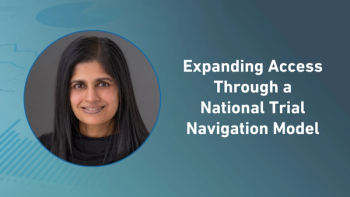
Designing Inclusive Trials: Removing Barriers for Underserved Patients
In this video interview, Heather Horville, solutions consultant at Greenphire, shares how patient advocacy, localized insights, and real-world logistics can help clinical operations teams design studies that are more accessible to rural and minority populations.
In a recent video interview with Applied Clinical Trials, Heather Horville, solutions consultant, Greenphire, discussed the challenges of retention and trial timelines due to increasing financial and logistical burdens on patients. Horville highlighted strategies to address these issues, such as early planning, patient advocacy, and site selection based on local needs. For complex trials, engagement through diary entries and stipends, and human interaction via concierge services will be critical. Future improvements will emphasize a comprehensive patient journey, incorporating services like travel prepayment to enhance trial success.
ACT: We know that rural and minority populations are disproportionately impacted by trial access barriers. How can clinical operations teams design protocols and site strategies to avoid unintentionally excluding these groups?
Horville: Now, when we think of study design, I really highly suggest that sponsors get more and more involved with patient advocacy groups, speaking to key opinion leaders, really finding out upfront what matters and how they can help, asking for feedback and what may prevent patients from enrolling in the first place, and then learning about the current climate for the different countries that they want to conduct research in, what's allowed, what's not, what is the preferred way to handle things. Once we find all this out, we can really use these learnings to design the study and inform site selection. One of the things that we may hear about in the feedback is, “How can we afford it?” Patients really ask that question. What if there are patients in this country, region, or town that don't have public transportation or ride share? I know, personally, I live in the country, I don't have public transportation within 40 minutes of a commute from my home. That's something that when you speak about rural populations, transportation is a huge barrier. In minority populations, we think of socioeconomic status in certain large cities and how that can be tied very largely to diverse groups. They have an impact when we have to think about, how are they going to take time off of work? How can they afford to do that? Who's going to watch their children? How are they going to pay for parking, meals, all of that? When we think of all those concerns, and we use that feedback, we can help design protocols and strategies, and we can help support our site to really help remove those barriers and make everyone's journey a lot easier.
Newsletter
Stay current in clinical research with Applied Clinical Trials, providing expert insights, regulatory updates, and practical strategies for successful clinical trial design and execution.




